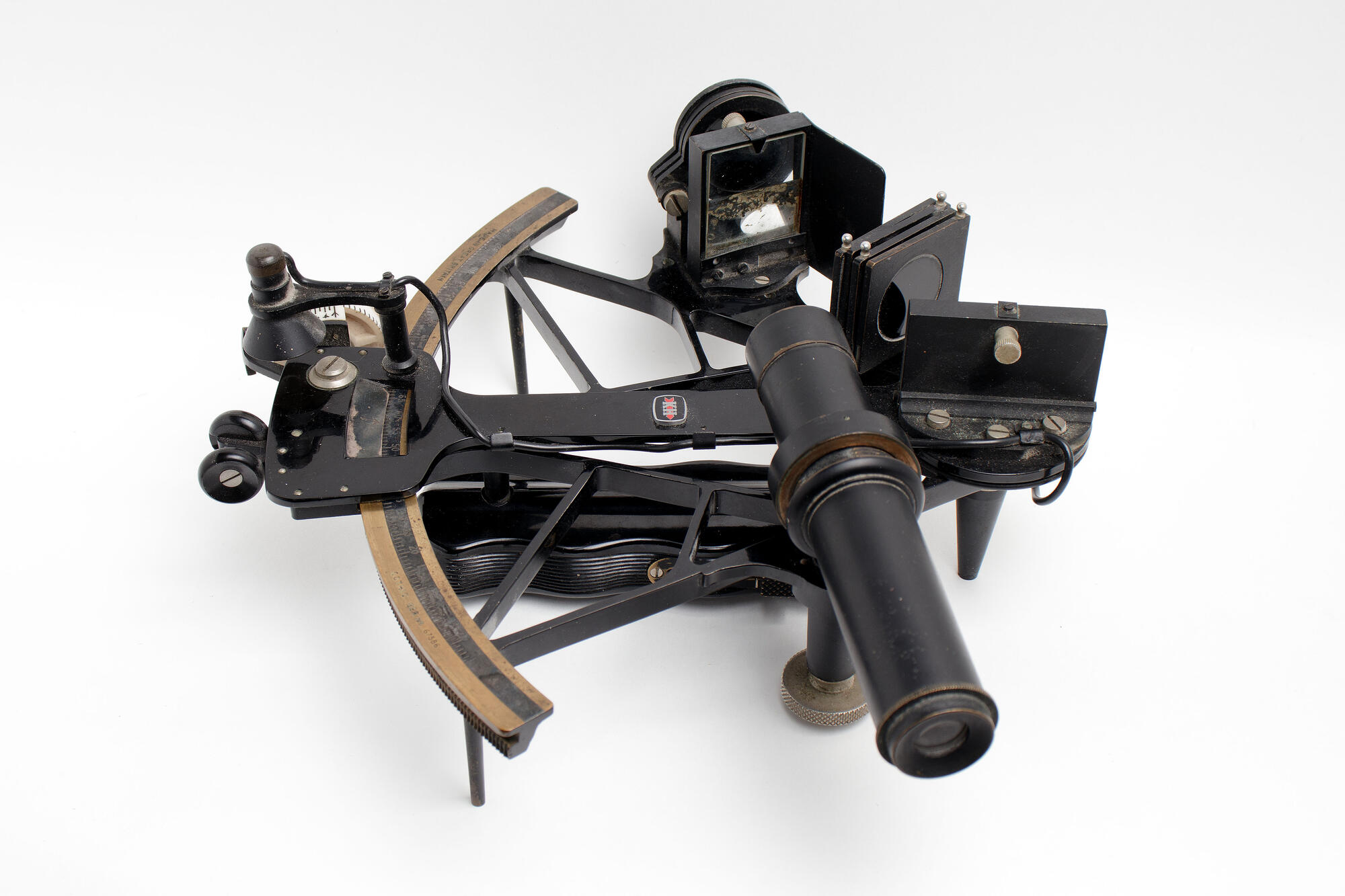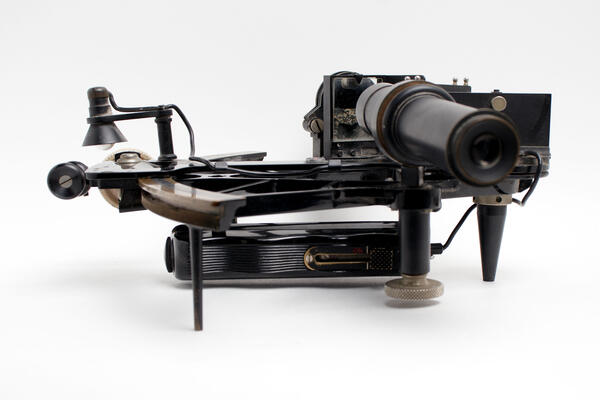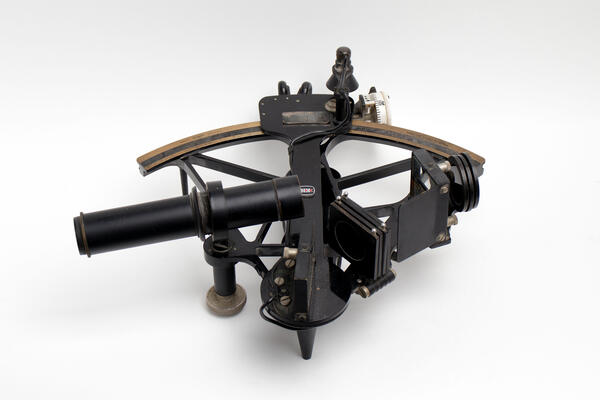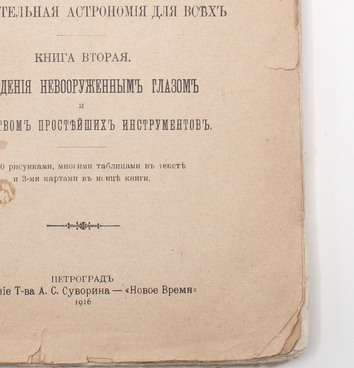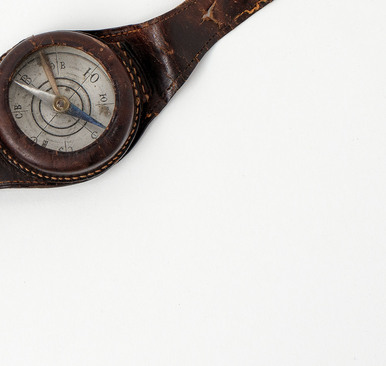A sextant is a navigational instrument used to determine the height of the Sun and other astronomical objects above the horizon in order to calculate the geographical coordinates of the current location. With the sextant one usually measures the angle between the Sun and the horizon from any point at which coordinates need to be determined.
The length of the sextant scale is 1/6 of the full circle or 60°. The name “sextant” comes from the Latin word “sextāns” meaning “one sixth”. The sextant relies on the principle of double reflection by using a set of two mirrors and comparing the images side by side to calculate the angle.
The sextant was invented in 1730 by two people independently: the English mathematician John Hadley and the American inventor Thomas Godfrey. The sextant replaced the astrolabe as the main instrument of navigation. The main advantage of the sextant is that when using it, the height of the celestial object is measured relative to the horizon, and not relative to the instrument itself which allows for greater accuracy.
When observed through a sextant, the horizon and the light source are combined in the same field of view and remain stationary relative to each other, even if the observer is on a rocking ship. This is because the sextant shows the fixed horizon straight, and the astronomical object — through two opposite mirrors.
All the components of the sextant are attached to its frame. The bottom of the frame features an arc. With the help of a sextant, one can measure angles up to 140° to the left of the zero index and up to 5° to the right; these marks are on the arc. Half of the surface of the horizon mirror is transparent, and a large index mirror is fixed at the top of the frame. The micrometer drum is used to measure angle minutes and is divided into 60 equal parts. One of its rotations corresponds to moving by half a degree, while the image visible through both mirrors is shifted by one degree. The scale of the arc takes into account this feature of the instrument.
The sextant is used by adjusting the lever and setting the screw until the lower edge of the image of the light source touches the horizon. The exact time is recorded by looking at the watch. A sextant is a sensitive instrument. If it is dropped, the arc may bend, and the device will no longer show accurate measurements.
Some modern vessels still have a sextant on deck, although it is rarely used — mainly for the boaters to maintain the skill of navigating with this device. The sextant from the collection of the Valerian Albanov Museum of Polar Explorers was made at the English factory “Kelvin & Hughes” in the middle of the 20th century.
